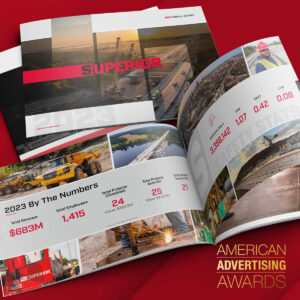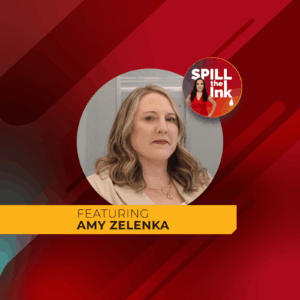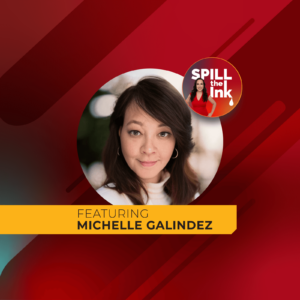
Inksights Blog : The Reputation Ink Blog
How to Build a Reputation That Can Take a Hit: 3 PR Tactics for AEC Firms
Google your firm right now. Go ahead, I’ll wait.
What shows up? If it’s just your website, maybe some LinkedIn profiles, and a few project listings, you’ve got a problem. And that problem gets exponentially worse the moment something goes wrong.
Here’s what happens when crisis hits an AEC firm with no public presence: that crisis becomes their entire identity. One safety incident. One project delay. One angry community member at a town hall. Suddenly that’s all anyone knows about you.
And you’re stuck starting from scratch at the worst possible time. You have to introduce who you are, establish that you’re credible, prove that you actually embody the values you claim — all while defending yourself against negative coverage. You have no foundation. No track record anyone can see. No reason for people to give you the benefit of the doubt.
Some firms are different, though. When they face challenges, it’s not the end of the world. Why? Because they’re already known for dozens of things. Their expertise. The projects they’ve completed. Their community partnerships. Their insights on industry challenges. So when a crisis hits, it’s just one piece of a much bigger story. It doesn’t define them.
That’s what we’re talking about here. Not preventing a crisis — you can’t always do that. But building something too substantial for one incident to define. Having the authority and trust to actually shape what happens instead of just scrambling to react.
Here are three PR tactics that build the kind of reputation that can take a hit without crumbling.
1. Thought Leadership: Have Authority Before You Need People to Listen
If you’ve never established credibility in your industry, nobody has a reason to listen to you during a crisis. You’re just the company defending itself. You have no track record of insight or contribution to industry conversations. Why should reporters, clients or community members trust your perspective?
Firms whose leaders are recognized voices don’t face this problem. When they speak during a crisis, people actually listen — not because they’re defending themselves, but because they’ve already earned respect over months or years of thoughtful contribution.
What Proactive Crisis Planning Looks Like
Your leaders need to be part of the industry conversation before a crisis forces them into it. This means:
Write for trade publications and business journals. Contribute bylined articles to ENR, Building Design + Construction, your local business journal or regional AEC publications. Share insights on what you’re seeing in the market, challenges you’re navigating and innovations you’re implementing.
Get quoted by reporters on industry trends. When journalists cover labor shortages, supply chain disruptions or sustainability requirements in construction, they need expert sources. If you’ve positioned yourself as knowledgeable, they’ll call you.
Speak at conferences and industry events. Present at AGC meetings, AIA conferences or local business forums. Panel discussions, keynote presentations and workshop sessions all build your credibility as someone worth listening to.
Have informed takes on pressing issues. Comment thoughtfully on topics like workforce development, OSHA regulations, climate resilience in design, public-private partnerships or the impact of new building codes. Share these perspectives on LinkedIn, in trade publications or in media interviews.
The goal isn’t to be promotional. It’s to demonstrate that your firm’s leaders understand the industry deeply and have valuable perspectives to share.
Why This Matters When Things Go Wrong
Here’s the payoff: When something goes wrong, reporters might actually call you for expert commentary instead of just covering the incident. If there’s a safety issue, a journalist who’s quoted you before on safety innovation might reach out for your take on what happened and what the industry should learn from it.
You get to help shape how the situation is understood rather than just defending yourself. Your established authority gives you a voice that carries weight — even in difficult moments.
And if the crisis is about your firm specifically, you’re not introducing yourself to reporters and stakeholders for the first time. They already know who you are. They already respect your expertise. That doesn’t excuse whatever happened, but it means you’re not starting from zero credibility.
2. Proactive Media Presence: Be Known For Lots of Things, Not Just One Bad Thing
If negative coverage is your only coverage, it becomes your entire identity in search results and public perception. There’s no context. No track record. Just the problem.
Think about it: When people Google your firm during or after a crisis, what will they find? If the answer is “mostly the crisis coverage,” you’ve got a visibility problem. That single narrative dominates because there’s nothing competing with it.
You need a body of work too big to be reduced to one incident. Firms with proactive media presence are publicly known for:
- Projects that made a difference in their communities
- Expert commentary on what’s happening in the industry
- Sustainability wins like LEED certifications or carbon reduction achievements
- Community partnerships and local investment
- Industry awards and recognition
When a crisis hits these firms, it’s one data point in a much larger picture. Search and AI results show dozens of positive stories alongside the negative one. Stakeholders see the full context of who the firm is, not just the incident.
The Search Test
Do this exercise right now: Google your firm name plus “news” and see what comes up. If it’s sparse — maybe a press release from two years ago and some project announcements — you’re vulnerable. When negative coverage appears, it will dominate your search presence because there’s nothing else there.
Now imagine instead: pages of media coverage about completed projects, executive quotes in industry stories, award announcements, sustainability certifications, community partnerships. A crisis story appears, but it’s surrounded by years of positive context showing who you actually are.
How to Build Media Presence
This doesn’t happen by accident. You need to build real relationships with the media and pitch stories consistently.
Identify your media targets. Trade press like ENR and Building Design + Construction. Local business reporters who cover real estate and economic development. Community newspapers that cover projects in their area. Industry podcasts and YouTube channels focused on AEC.
Pitch proactively. Don’t just send press releases when projects are complete. Pitch stories about:
- Project milestones with newsworthy angles (groundbreakings for significant community projects, topping out ceremonies, innovative construction methods)
- Industry insights your leaders can share (what you’re seeing in the market, how you’re solving supply chain challenges, workforce development approaches)
- Certifications and achievements (B Corp status, LEED certifications, safety awards, minority-owned business certifications)
- Community impact (local hiring initiatives, partnerships with trade schools, volunteer work, sponsorships)
Build real relationships. Get to know reporters who cover your beat. Respond quickly when they reach out. Offer background information even when you’re not pitching a story. Comment thoughtfully on their articles. These relationships matter when a crisis hits — reporters who know you approach stories with more nuance.
The firms that weather crises best have been showing up consistently in the media for years. They’re not invisible until something goes wrong.
3. Public Track Record: Show You’ve Always Cared, Not Just Now
When you have no public track record and something goes wrong, everything you say sounds like spin. You claim you prioritize safety? Prove it. You say sustainability matters? Show receipts. You care about your workforce? Where’s the evidence?
You’re asking people to trust you at the worst possible time — when they have every reason not to.
Firms that have been publicly demonstrating their values for years don’t have this problem. The record speaks for itself. Their commitments aren’t just claims made during crisis — they’re documented, verified and visible over time.
What to Document Publicly
Build years of public evidence around your core values. This isn’t marketing fluff — it’s demonstrable proof of what you actually prioritize.
Safety: Issue press releases about safety milestones (500 days without a lost-time incident), announce OSHA awards and certifications, publicize safety training programs and innovations, share your commitment to worker protection. Make your safety record public and verifiable.
Sustainability: Announce LEED certifications on projects, publicize carbon reduction goals and progress, share sustainability reporting, pitch stories about sustainable design choices or construction methods, submit projects for green building awards.
Workforce development: Make your diversity initiatives public with measurable goals and progress updates, announce apprenticeship programs and partnerships with trade schools, publicize workplace culture awards (Best Places to Work, Top Workplaces, etc.), share stories about leadership development and retention.
Community engagement: Announce partnerships with local organizations, publicize community investment and volunteer work, share transparent project communication approaches, highlight local hiring and subcontractor relationships.
The key is consistency over time. One press release doesn’t cut it. You need years of documented commitment that anyone can verify.
Why This Saves You in Crisis
Here’s what happens when you’ve built this track record: Nobody can claim you “suddenly care now that you’re in trouble.” The proof is public and timestamped. You’ve been demonstrating these values long before crisis forced you to talk about them.
Say there’s a safety incident at one of your projects. It’s serious. People are rightfully concerned and asking questions. When they search your firm, they find:
- Years of safety award announcements and OSHA recognition
- Public statements about safety investments and protocols
- Media coverage of your safety training programs
- Industry awards for safety innovation
Does this excuse what happened? Absolutely not. But it provides crucial context. It shows this is an outlier in an otherwise strong record, not a pattern of negligence. It demonstrates that safety has been a genuine priority, not just something you claim when you’re in trouble.
That context matters. It’s often the difference between “this firm clearly doesn’t care about safety” and “this firm has a strong safety record and something went wrong — let’s understand what happened.”
Third-party validation through awards, certifications and media coverage carries real weight because it’s not just your word. It’s verifiable proof from independent sources.
Build Something Too Big to Collapse From One Hit
Every AEC firm will face problems. Project delays happen. Budgets get stressed. Communities push back on developments. Safety incidents occur despite best efforts. You can’t avoid all of it — it’s the nature of complex, visible, long-timeline work in the built environment.
The real question isn’t whether you’ll face challenges; it’s whether those challenges will define you or just be one thing in a much bigger story.
Firms that take a hit without crumbling have something in common: they built substantial reputations before they needed them. They established authority through thought leadership so people listen when they need to be heard. They created a robust media presence so they’re known for many things, not just one problem. They built public track records so trust is already there when it matters most.
And here’s the thing — even without a crisis, these PR tactics make your firm stronger. Thought leadership differentiates you from competitors and opens doors to better opportunities. Media presence builds market visibility and brand strength. Public track records enhance recruiting in a tight labor market and support business development efforts.
But when crisis does hit — and it will eventually — you’ll have what most firms desperately wish they had: something to stand on. Authority that commands attention. A body of work that provides context. Trust that’s already been earned.
You can’t build this during a crisis. You can only build it before.
So the question is whether you start now or wish you had when it’s too late.
Related AEC, Architecture, Construction and Engineering. Content
Maximizing Employee Engagement Through a Compelling Employee Newsletter
Reputation Ink | Jun. 24, 2025
Rebuilding a Construction Company’s Brand With Impactful Visuals
Reputation Ink | Jun. 24, 2025













